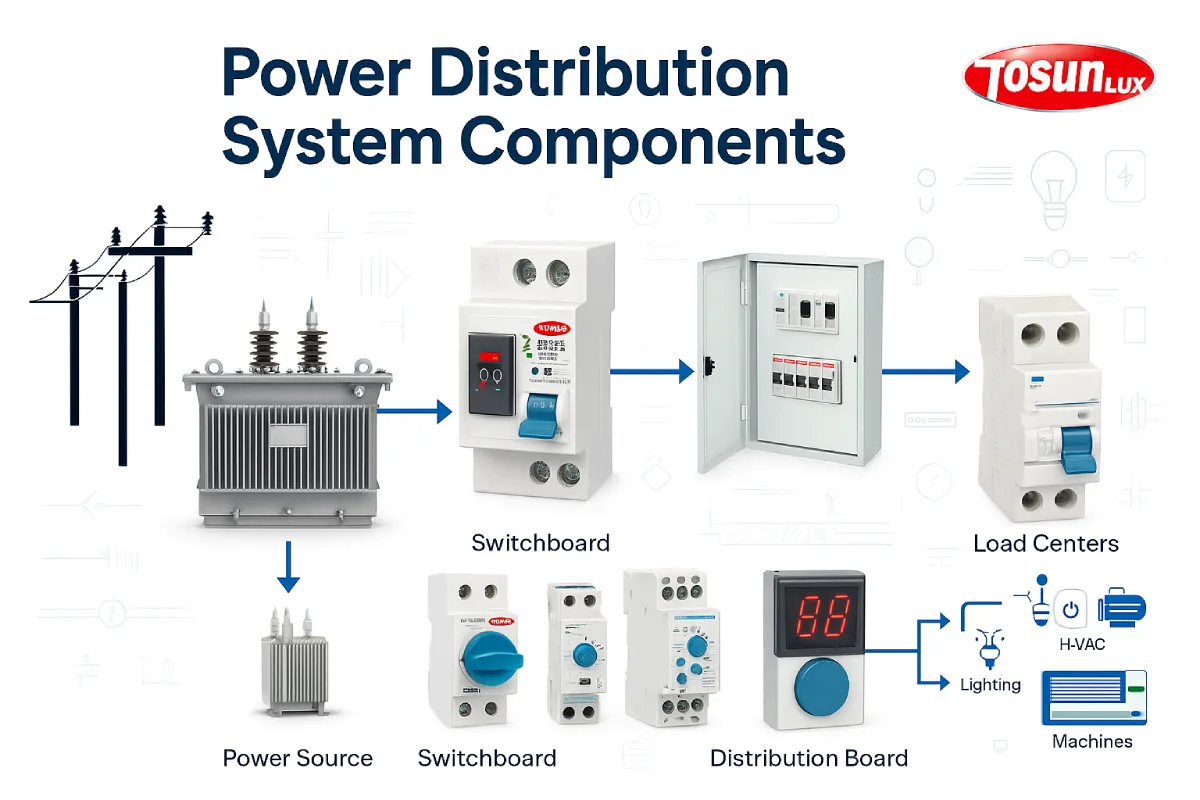Mechanical Timer Switch: Types, How To Use & More
Table of Contents
Toggle
A mechanical timer switch, also referred to as an analog timer switch, is a timing device that employs physical components like springs, gears, and electric motors to regulate the power supply to an electrical device.
To learn more about this device, here’s a practical guide to get started.
How Does A Mechanical Timer Switch Work?
Operating in an analog manner, it utilizes clockwork mechanisms to determine when to switch the power on and off.
This type of timer switch is manually configured by adjusting a knob to set the desired time interval for powering on or off.
Although mechanical timer switches are cost-effective and straightforward to configure, they may be larger and require more maintenance due to the utilization of moving parts.
Commonly employed for managing lighting, appliances, and other electrical devices, they offer an economical means of automating various systems.
Despite the emergence of more intricate digital and electronic timers, mechanical timer switches remain a simple and budget-friendly option for overseeing lights and other devices.
Types of Mechanical Timers
Mechanical timer switches come in two main types: digital and analog. These switches control electrical systems based on time intervals set by the user.
They help automate tasks by turning devices on and off at specific times, making it easy to plan when things should work.
Analog timers, also called mechanical timers, work alongside modern digital ones.
These timers are used in many areas, like watering crops, lighting up signs, and controlling outdoor lights for businesses.
For example, streetlights and garden irrigation systems rely on these timers to work efficiently.
Whether for farming or large commercial projects, both analog and digital timers are versatile and easy to use in different situations.
Where Mechanical Timer Switches Are Used
Mechanical timer switches are versatile devices used for various purposes. Here’s a breakdown of their uses and benefits:
- Lighting Control: Ideal for automating indoor and outdoor lighting systems.
- Appliance Management: Useful for managing appliances like ovens and water pumps.
- HVAC Controls: Helps in regulating heating and cooling systems efficiently.
- Cost-Effective: Provides an affordable solution for automating home and industrial systems.
- User-Friendly: Known for their simplicity and ease of use, making them accessible to everyone.
- Durable: Built to last, offering reliability in various settings.
- Industrial and Home Use: Suitable for both residential and industrial applications.
Despite the presence of digital timer switches, mechanical timer switches continue to be a popular choice due to their affordability and straightforward operation.
How to Use Mechanical Timer Switches
To implement a timer or analog switch, you need an existing system, whether on an industrial or personal scale.
Examples of personal systems include regulating aquarium motors, filters, and lights.
While digital models allow precise adjustments down to the second, mechanical analog time clocks are user-friendly, indicating the start and end points with notches on a circular structure.
Deviations of + or – 5 minutes may occur in mechanical switches.
For digital models, weekly, daily, and hourly plans with precise minute settings are possible, providing detailed control.
Selecting the appropriate timer type and model—digital or analog—depends on the purpose and specific requirements of the task at hand.
How to Set a Mechanical Timer Switch
To configure a mechanical timer switch, follow these general steps:
- Connect the timer to the wall and the appliance to the timer.
- Adjust the dial to set the current time.
- Press down the pins for the times you want the device to activate and keep them pulled out for when you want the device to deactivate.
- If available, set the timer to “On-Auto-Off” mode.
- Switch the manual switch button to the “Timer” setting.
These steps might vary slightly based on the specific model of the mechanical timer switch.
Important: Always consult the manufacturer’s instructions for precise guidance.
How to Fix a Mechanical Timer Switch That Is Not Working
To address issues with a malfunctioning mechanical timer switch, consider these general troubleshooting steps derived from search results:
- Step 1: Verify Timer Settings: Confirm that the timer is correctly set, as incorrect settings can lead to unexpected malfunctions.
- Step 2: Check Timer Wiring: Ensure proper wiring and power distribution, addressing loose terminals that might disrupt the electrical flow.
- Step 3: Inspect for Broken or Stuck Components: Examine the timer for damaged gears or springs, caused by factors like age, dirt, or debris. Lubricate stuck gears, and replace broken ones if necessary.
- Step 4: Power Supply and Fuse Verification: Confirm an adequate power supply and check for a blown fuse, as insufficient voltage or a blown fuse can impact the timer’s operation.
- Step 5: Battery Replacement: If the timer relies on batteries, replace them if the display is unclear or if the timer isn’t functioning correctly.
- Step 6: Examine Tripper and Gear Alignment: Inspect trippers and gears for damage or misalignment. Clean gears and ensure proper alignment of trippers for accurate on/off timing.
Always consult the specific manufacturer’s instructions for comprehensive troubleshooting steps, as the process may vary depending on the mechanical timer switch model.
Key Takeaway
Analog or mechanical timers are devices that manage the operation of electrical machines or systems, turning them on and off based on a predetermined schedule.
The primary goal is energy conservation, making timers a practical choice.
By stopping energy-consuming devices when they’re not needed, you not only save electricity but also enhance user convenience.
This deliberate approach to controlling device operation contributes to both energy efficiency and system professionalism.
Product Recommendation
TOSUNlux specializes in low-voltage electrical and lighting items, featuring both digital and mechanical timer switches.
Notably, the THC-15A model provides a 24-hour timing capability for 7 days, supporting a contact capacity ranging from 16A to 30A.
The THC15A Programmable Periodic Timer Switch stands out as a flexible Digital Timer Switch designed for the scheduled operation of connected appliances or loads.
Through this automation, the device contributes to enhanced energy efficiency and resource conservation.
It offers additional functionalities like a countdown feature and the flexibility to tailor intervals, spanning from seconds to weeks.
With a capacity to manage electrical loads of up to 30 Amps, the timer switch accommodates various appliances, including lighting systems, pumps, fans, and motors.
Moreover, TOSUNlux’s product range extends beyond timer switches to include circuit breakers, isolating switches, contactors, distribution boards, and panel meters.
Other timer switch options available in the market encompass the Timer Switch with Pulse and Cycle Program and the DIN Rail Timing Relay Electronic Big Display LCD Digital Timer.
Contact TOSUNlux today via their website for a quotation.
Tel: +86-577-88671000
E-mail: ceo@tosun.com
Skype: tosunelectric
Wechat: +86-139 6881 9286
WhatsApp: +86-139 0587 7291
Address: Room No.1001 Wenzhou Fortune Center,Station Road, Wenzhou, China
REQUEST A QUOTE
WhatsApp us
 : +86-139 0587 7291
: +86-139 0587 7291 English
English Español
Español Русский
Русский Français
Français العربية
العربية Português do Brasil
Português do Brasil Українська
Українська Türkçe
Türkçe Polski
Polski Nederlands
Nederlands Italiano
Italiano Bahasa Indonesia
Bahasa Indonesia हिन्दी
हिन्दी اردو
اردو አማርኛ
አማርኛ Հայերեն
Հայերեն ไทย
ไทย Монгол
Монгол فارسی
فارسی Shqip
Shqip Ελληνικά
Ελληνικά



